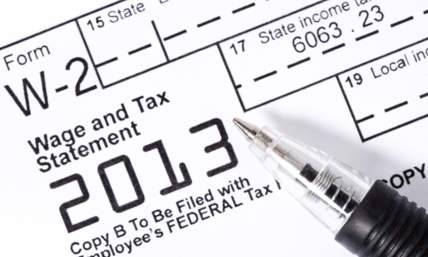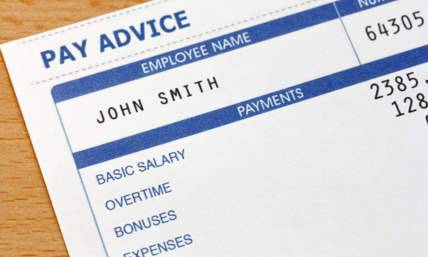Do You Know What the Check Number on a Pay Stub is?
Have you ever wondered if employers or the inland revenue service make pay stubs as difficult to understand as possible just for fun? Plenty of the information on your pay stubs are just formalities that your employer has to put down as a record to show that they are doing what they should be doing, but working out what you need to know and what you don’t on your pay stubs can be tricky.
We’re aiming to demystify some of the aspects of your pay stub that aren’t exactly clear to everyone what they mean or why they are there. Wanting to understand how your pay is worked out and where your wages are coming from and going is no bad thing. If you know what you’re looking at, you’re more likely to catch any errors your employer might make. Let’s start with the check number you might see on your pay stub. What does it look like and what does it mean?
Also read: Does My Employer Have to Give Me A Pay Stub?
What is a pay stub?
This is a shortened term for a paycheck stub, and it is a record of your earnings from your employer. It provides information about what you are paid, government tax deductions, as well as details about you and your employer. Your pay stubs will show you a breakdown of your earnings to date and for the pay period since you were last paid. Some companies choose to pay weekly, fortnightly, or monthly.
Your paycheck is a record for both you and your employer to evidence they have paid you a fair wage and are meeting their obligations as an employer. Should any employee claim that they have not been paid a fair wage or what they expected, the pay stub is a paper trail that can be examined by both parties or an employment tribunal should a legal allegation be made. This means that the evidence is there in black and white to evidence exactly what funds have been released and on what date.
Also read: Calculate Take Home Pay

What is the check number on the pay stub?
The check number on your paycheck stub is a reference number for the employer’s accountancy department’s use. Normally, you wouldn’t have to worry about the check number, as it is a way of organizing the various paychecks sent out to various employees from the employer. For example, if you were a new company and sent out your first lot of paychecks to your five employees, the paycheck number would be a number between 1 and 5 and that number would represent the worker and the specific paycheck they had received. The next lot of paychecks would probably have numbers 5-10 on them.
The check number is a way of finding the specific paycheck on the occasion that an employee has a question about their wages or mandatory deductions. This system may be used in conjunction with your employee number. For example, if your paycheck number is 1 and next month it reads 2, then the paycheck number refers to the number of paychecks you have received to date. In this case, searching for your employee number and the number of the paycheck would lead the accountant to the correct payslip.
If you have received a check with a pay stub attached, then the check number will have the same check number printed on the check and the stub to show that the two documents go together. You deposit the check into your account or cash it, and you keep the stub for your records.
If anything goes wrong in this process, the check number means you can connect the dots back to find out where it went wrong and work with your employer and the bank to resolve the issue. It sort of functions like a receipt to show what you are entitled to receive from your employer. Usually, paychecks are produced ahead of time and so are dated ahead to the date when it will be given to you or the money will be sent to your account if your employer uses a direct deposit system.
Also read: How Often Do You Get A Paycheck?

Why is it important?
You should keep your check stubs somewhere safe for your records. It is possible to ask your employer or your bank to provide replacement check stubs if you misplace them, but it’s easier just to deposit the check and then keep the stub somewhere safe. Why is it sensible to keep the check stub? Well, in the future, you may need to evidence your earnings, if you apply for a loan or car finance contract or wish to get a mortgage, you will have to evidence sufficient income not just for that year, but for several years back.
While you might not be planning to apply for any of these things, you don’t know what life might have in store for you in the next few years. We simply can’t see the future, so it’s best to be prepared and have your employment history somewhere safe and accessible in case you ever need them. You may be surprised how often you may need to provide your proof of income to various government and official agencies.
If an error is made in the tax deductions for some reason, you will need to reference your pay stub, which will show the breakdown of the deductions made. For example, if you received a letter from your healthcare insurance provider saying that you are no longer covered for healthcare because you failed to make the last two payments, you would be able to evidence that the correct amount had been deducted from your earnings by producing a copy of your payslip. If they were correct and the amount for healthcare insurance had not been taken, you would be able to show that this was an error on behalf of your employer and not your fault. That will help your insurance get re-instated quickly.
Also read: Independent Contractor Pay Stub

Where can I find the check number?
The check number will be in two places on your paycheck. Before you deposit or cash your check, it should be in the top right corner of the check itself, along with the date it was issued. You will find the check number and issue date on your check stub near the top of the stub. It is usually directly after your personal information, like your name and address. This means you can find it quickly as you flick through past check stubs.
If you don’t get a physical paycheck, then you should still get some form of paycheck stub for your records. It might be emailed to you in the form of a document. This would typically happen if your employer deposits your money into your bank account on payday. This requires less paperwork and printing, but you still need a record of what you’ve earned and what has been deducted, and why. If you have been given a direct deposit check stub, this will still have the date it was deposited and the check number, even if it isn’t printed out.
Lots of employers use direct deposits to pay their workers because it’s easier in some cases and uses fewer office resources like paper and printer ink. It also gets into your account faster than if you have to wait for some free time to deposit or cash the check, and then wait for it to physically appear in your bank account as cleared funds.
If your employer does pay by direct deposit, then you are still entitled to a record and breakdown of your earnings. You can ask your employer for a physical pay stub even without the check, and most employers will do this for you as they recognize that you may wish to keep a physical record of your earnings.
Also read: What Is Added On A Pay Stub?















